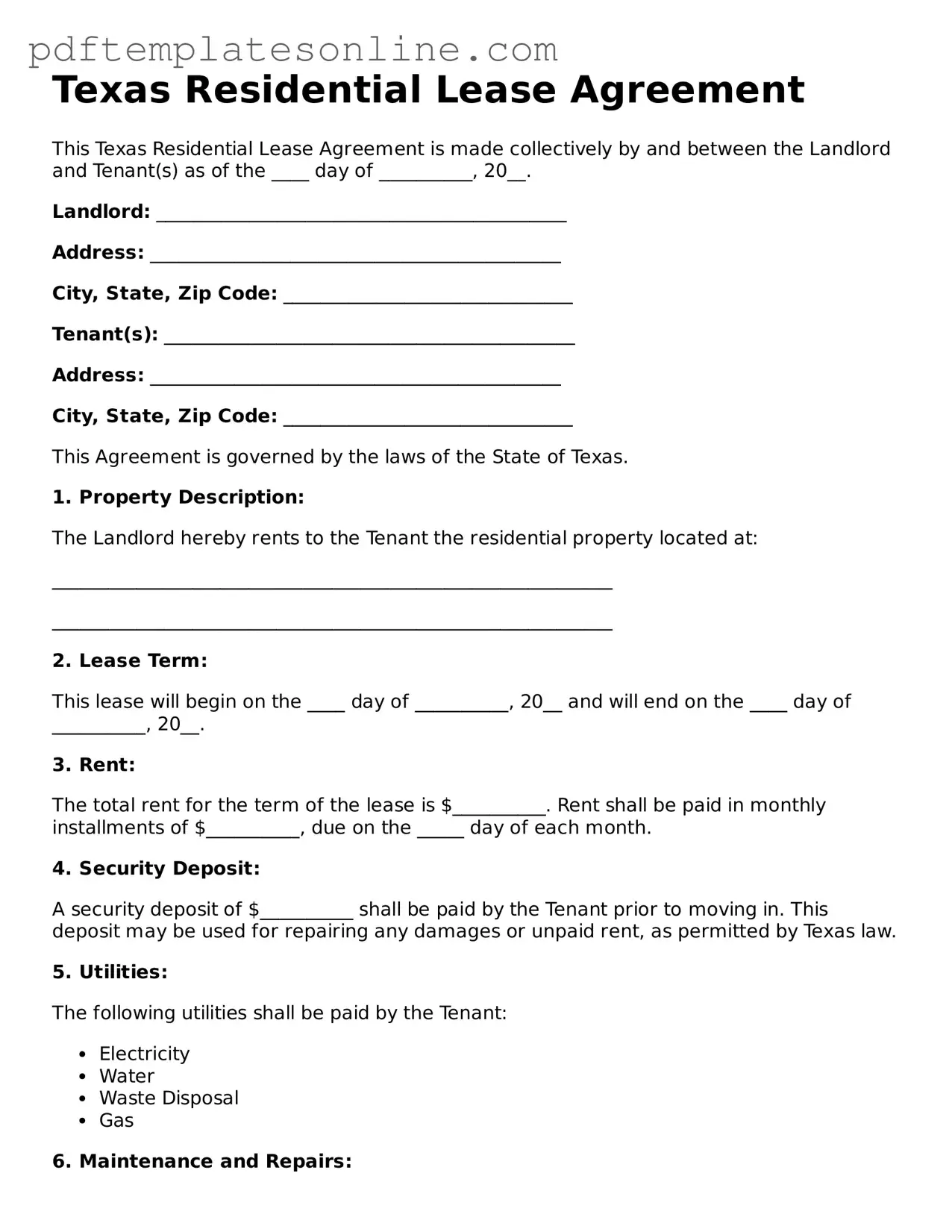Official Texas Residential Lease Agreement Document
The Texas Residential Lease Agreement is a legal document that outlines the terms and conditions between a landlord and a tenant for renting a residential property in Texas. This form serves as a vital tool, ensuring that both parties understand their rights and responsibilities during the lease period. Understanding this agreement can help foster a positive rental experience and prevent potential disputes.
Access Residential Lease Agreement Editor Now
